
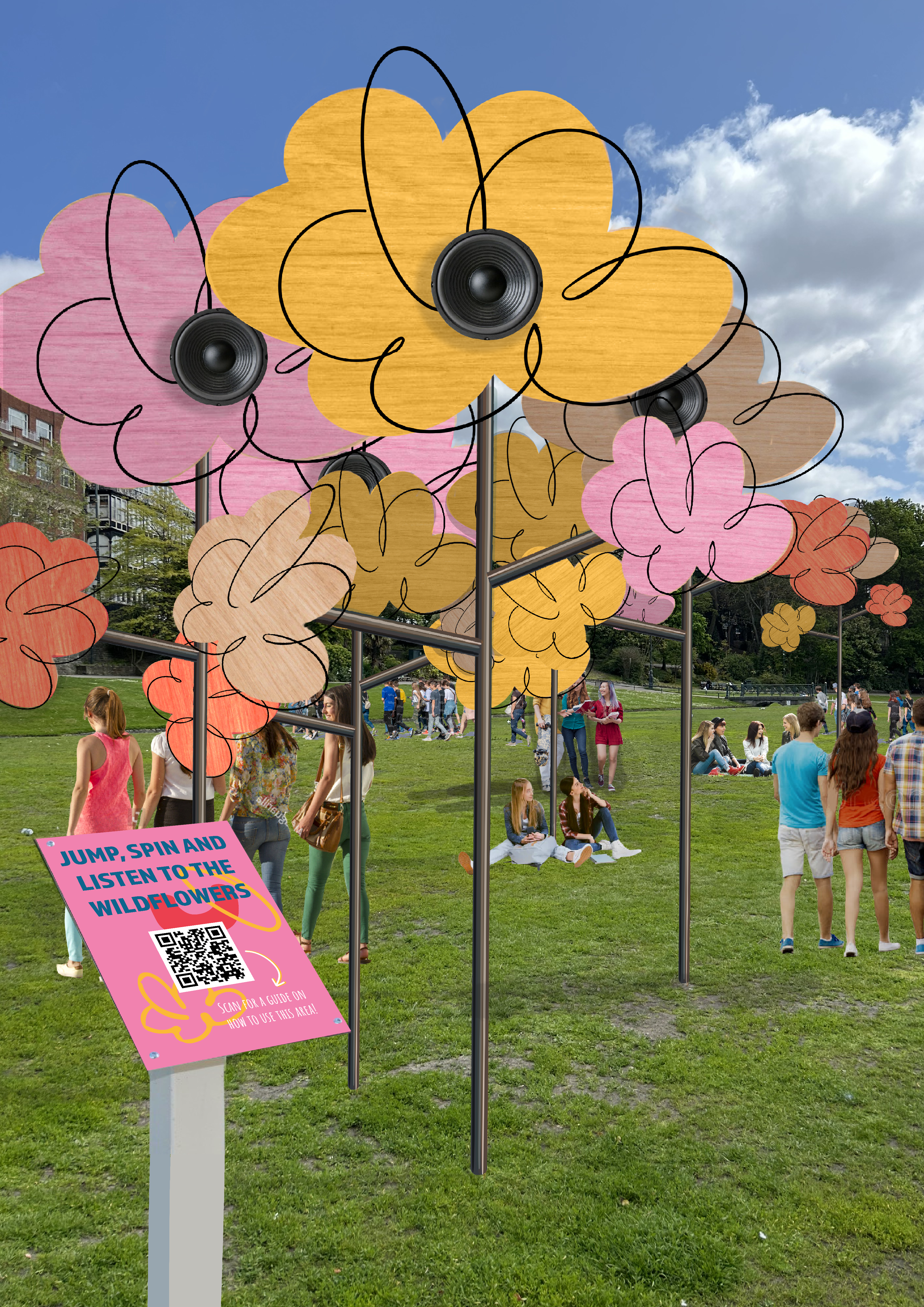
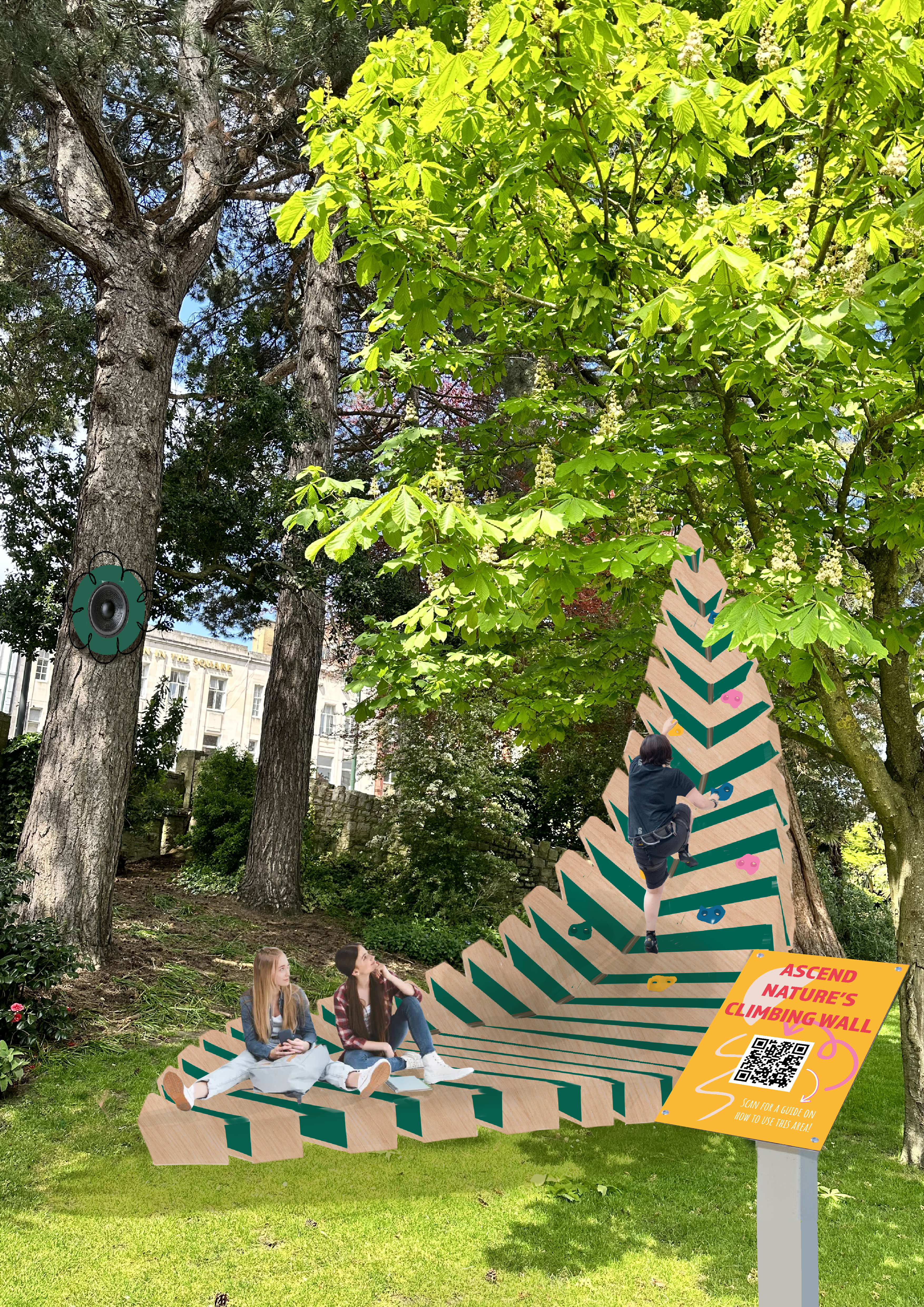
Design an urban intervention which encourages teenagers to connect with the natural environment in Bournemouth.
Phoebe Hart, Gergana Sarieva + Alice Gow.
83% of the UK population now live in urban areas and this is having deadly consequences on our mental and physical health with experts arguing that cities make us sick because of the social and physical stresses they create. The aim of this brief was to increase the time teenagers spend in the natural environment within Bournemouth and as a result improve their connection to nature and multi-species.



The user group we are designing for are teenagers aged 13-18, with a range of physical and mental health states. We gave each user a name to make it more personal and as a group we spent time brainstorming how we could design for each of them. We established connections between different users, for example could we use physical activity as it is a common interest? Initially, it was difficult to imagine how we could design something appropriate for all users but later understanding the desires of our users through research insights was key.
Using the library I researched urban interventions, product design and biophilic design. I generated some initial ideas for the users which connect nature-inspired ideas with urban interventions. I enjoyed researching existing design solutions and in doing so I was reminded of the importance of research when starting a project.

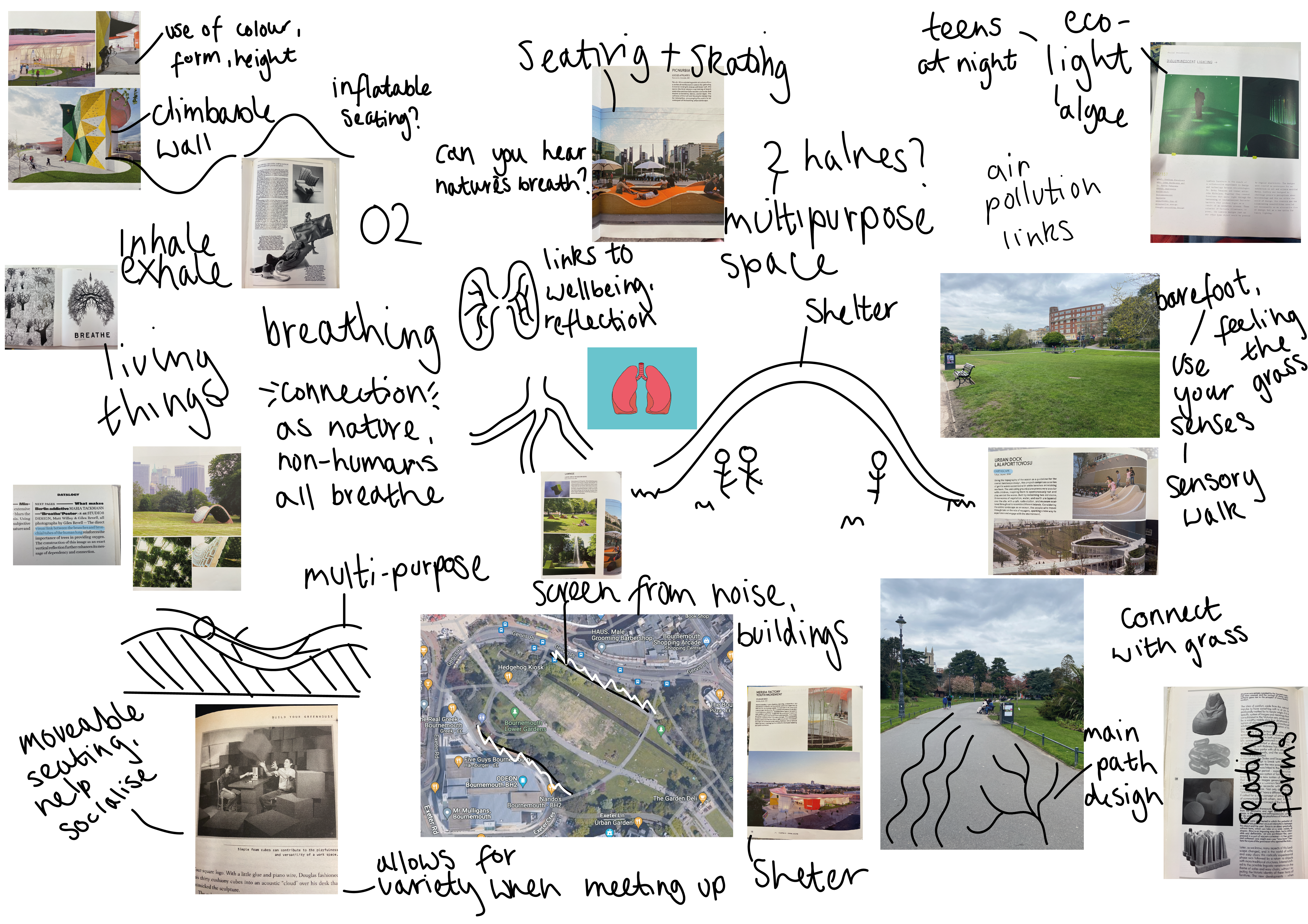
The Empathy workshop developed my understanding of designing for users other than myself. This photo shows Alice and I working on the descriptive language we use to verbalise what we want someone to do. We used this understanding to clearly signpost the areas in our intervention, using design and language to communicate to teenagers what we wanted them to do. From learning about the importance of colour contrast in the workshop, I used an accessibility checker to test our brand colour palette.
In the Placemaking workshop we photographed, sketched and used the AX4 site analysis tool to document our findings. My role was to photograph actors, activities, artefacts and atmosphere and assist Alice with scribing our observations. The introduction of the AX4 method has developed my thinking as a designer, particularly when it comes to how people use a site and their intentions. We identified the main problem of the area to be that the benches weren't large enough, discouraging teenagers from staying.
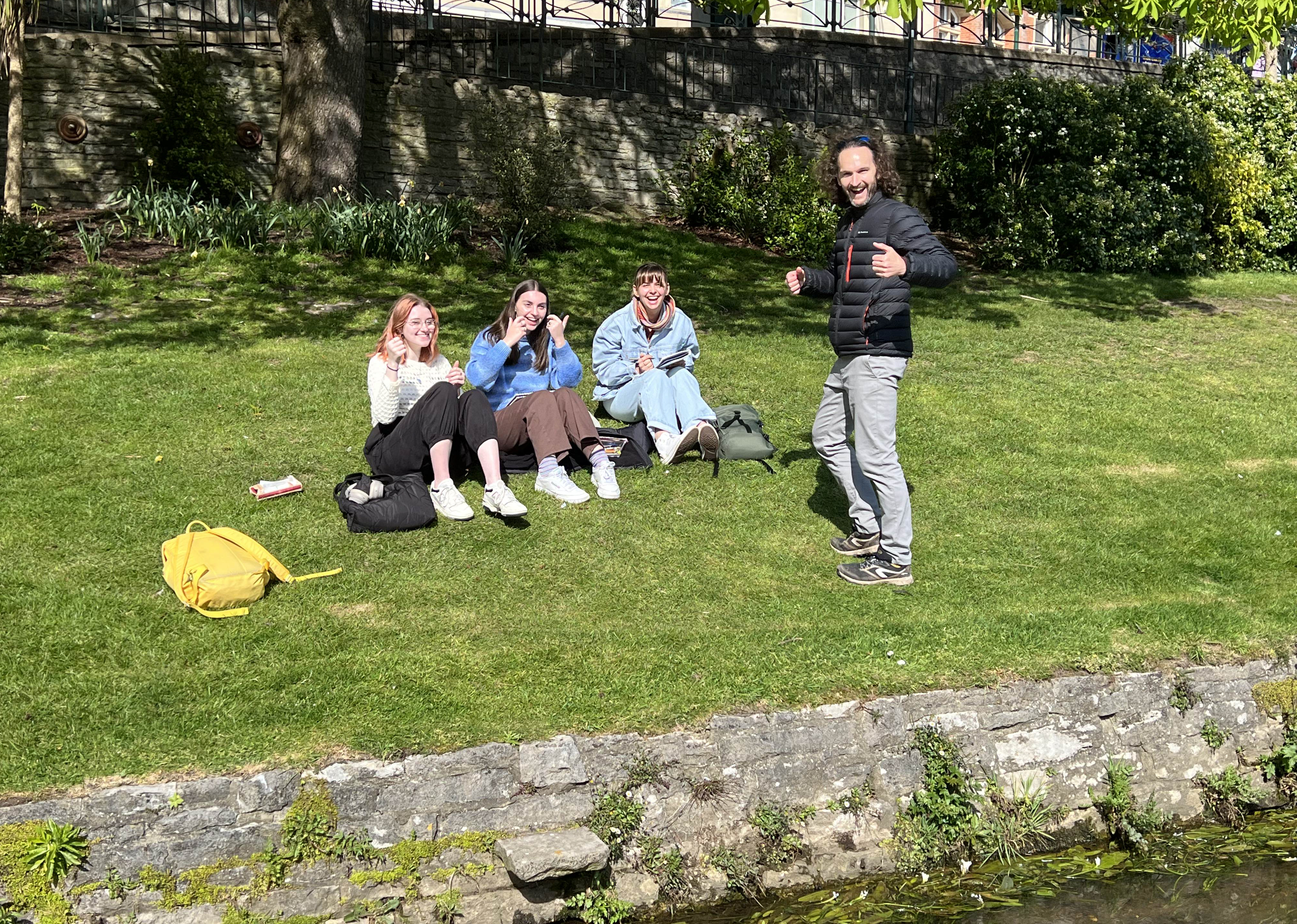
Next we generated ideas in time stages based on our findings. Our group collaborated with an Interior Architecture student and one idea from our rapid ideation was 'Net', which uses one material in a variety of ways to create a multi-purpose structure. Our developed idea titled 'The Loop' mainly houses equipment for physical activity and we developed elements from both ideas into our final outcome. I found the different duration of timed stages was useful to generate lots of ideas and then later relate them to each user, rather than discrediting ideas early.


We undertook user-centered research with a questionnaire. Receiving these key insights highlighted to me the importance of user-centered research to gain knowledge of demographics other than your own.
We created three new ideas based on our three key insights. I designed idea two which is an elevated seating pod with privacy screens. The pods are accessed by a ladder which requires physical activity and discourages a younger audience. Upon reflection, although the teenagers would be outside we felt the connection to nature and non-human species aspect was weak.



In all our structures we have considered our use of sustainable materials and attempted minimal disruption to the existing landscape.
We explored the idea of amplifying nature as a way to engage and connect teenagers to nature. Combining our initial insights with the idea of amplifying nature, we created a summer event where teenagers can come to connect to nature through sound. I attended an Interactive Systems workshop which developed my understanding of interactive technology which we can use to connect teenagers to the environment and species around them.
We sent out a second questionnaire to teenagers about a nature-inspired festival for teenagers. Our key insights from this were that the majority had never been to a festival because they were too young but the concept was cool and appealed to them. These findings approved our concept and demonstrated a desire for the described event.
On another site visit we observed nature and non-human species, visually and audibly. We took inspiration from the structures we observed within nature and I illustrated potential designs inspired by these. Research into nature sounds in urban areas revealed that society often ignores the sounds around them so we decided to amplify the audio as well.
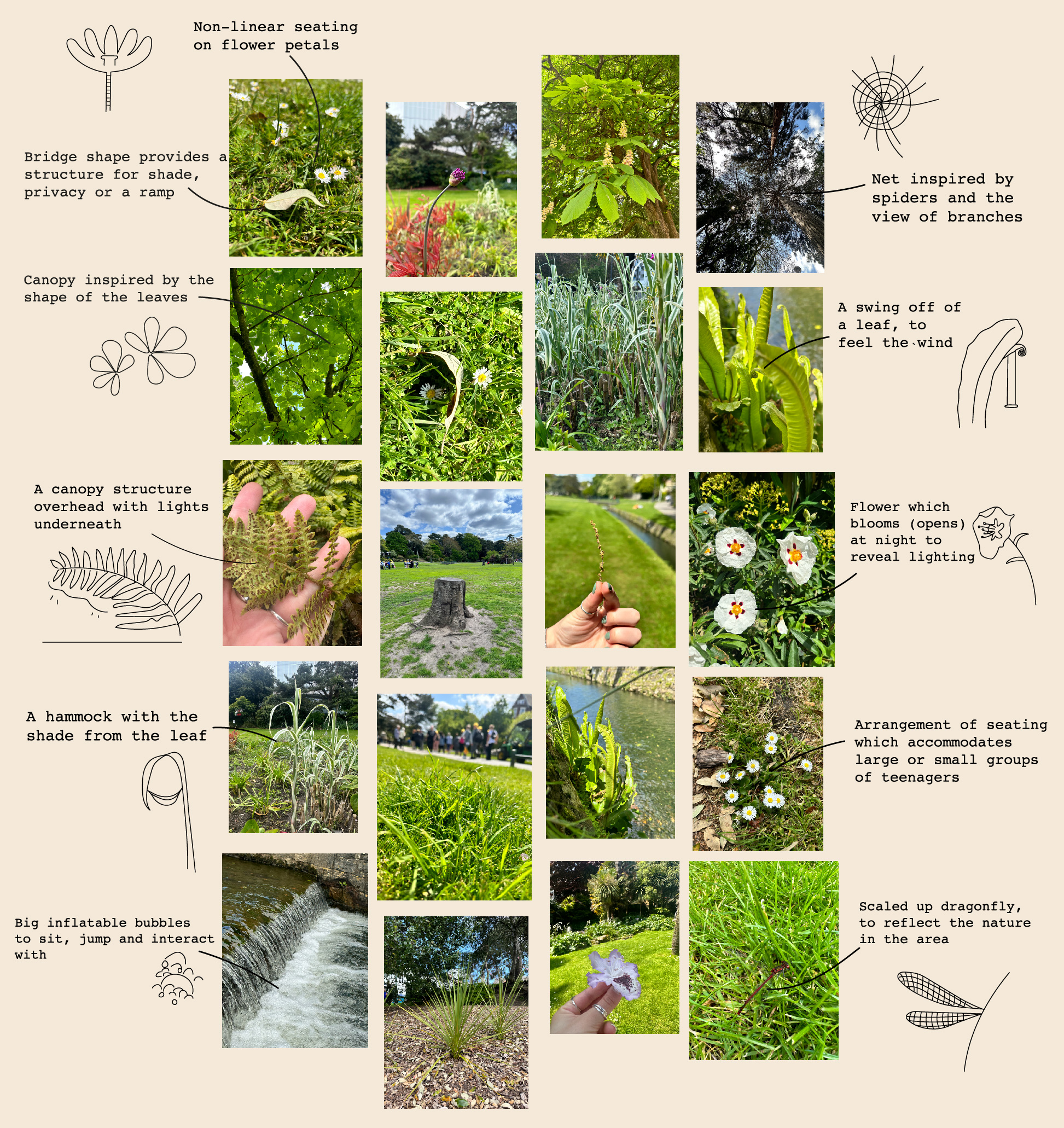


The 3D prototypes demonstrate our idea and help us develop the concept. At this point we revisited the target users and I noted the ways that our intervention satisfies each of them. We were critical about which festival areas to include, drawing on the teenager's insights and user descriptions throughout.
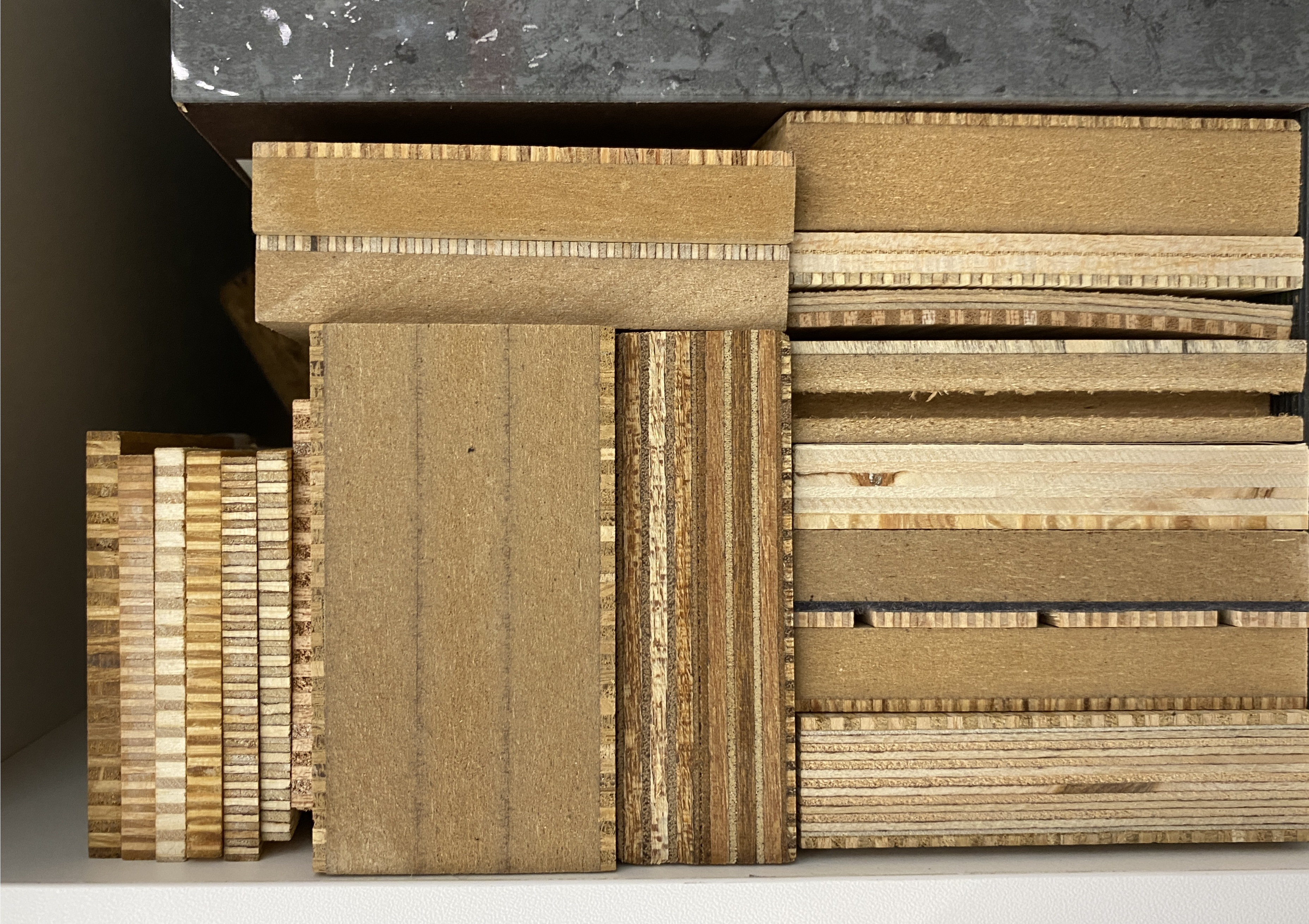
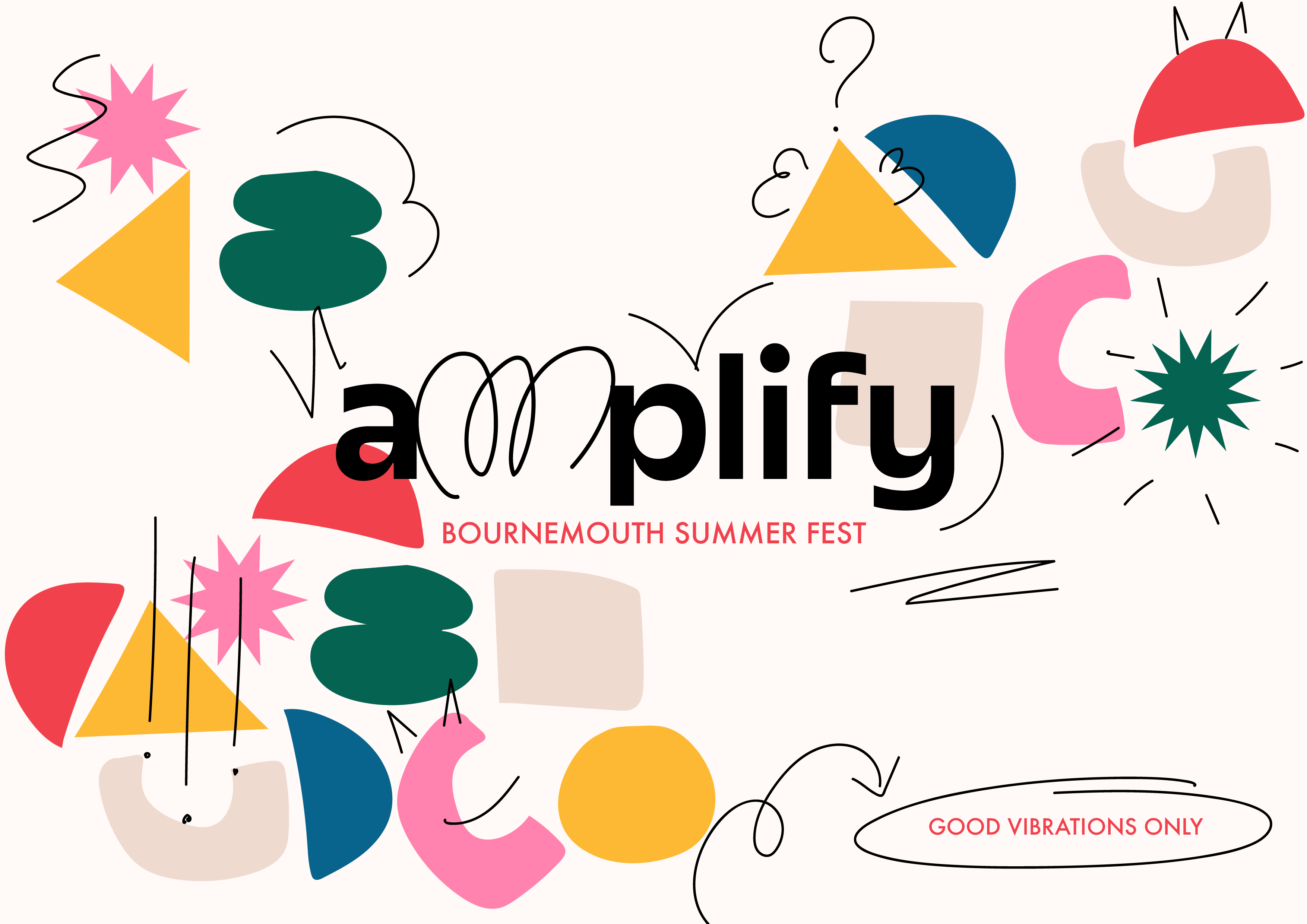
A key finding from our second questionnaire was that a colourful aesthetic over a natural one is preferred. Due to this finding, we had to combine sustainability with aesthetics and drew inspiration from stage rigging at festivals and the work from Morag Myerscough. I visited the AUB materials library to research the visual style we could achieve. Recycled scaffolding poles and plywood were our two main materials of choice, and we would use these where possible in our structures. Phoebe did some research into the parametric design style, and we considered the different ways of using wood in our structures.
Alice and Phoebe created these mock up designs of Amplify Festival. Each area of our festival works to engage teenagers with the natural environment by amplifying the sounds of nature through interactive structures. There are QR codes at each area which explain how to engage with the structure in the most meaningful way. Below is a poster I designed which aims to attract teenagers to the festival and would be displayed around Bournemouth.
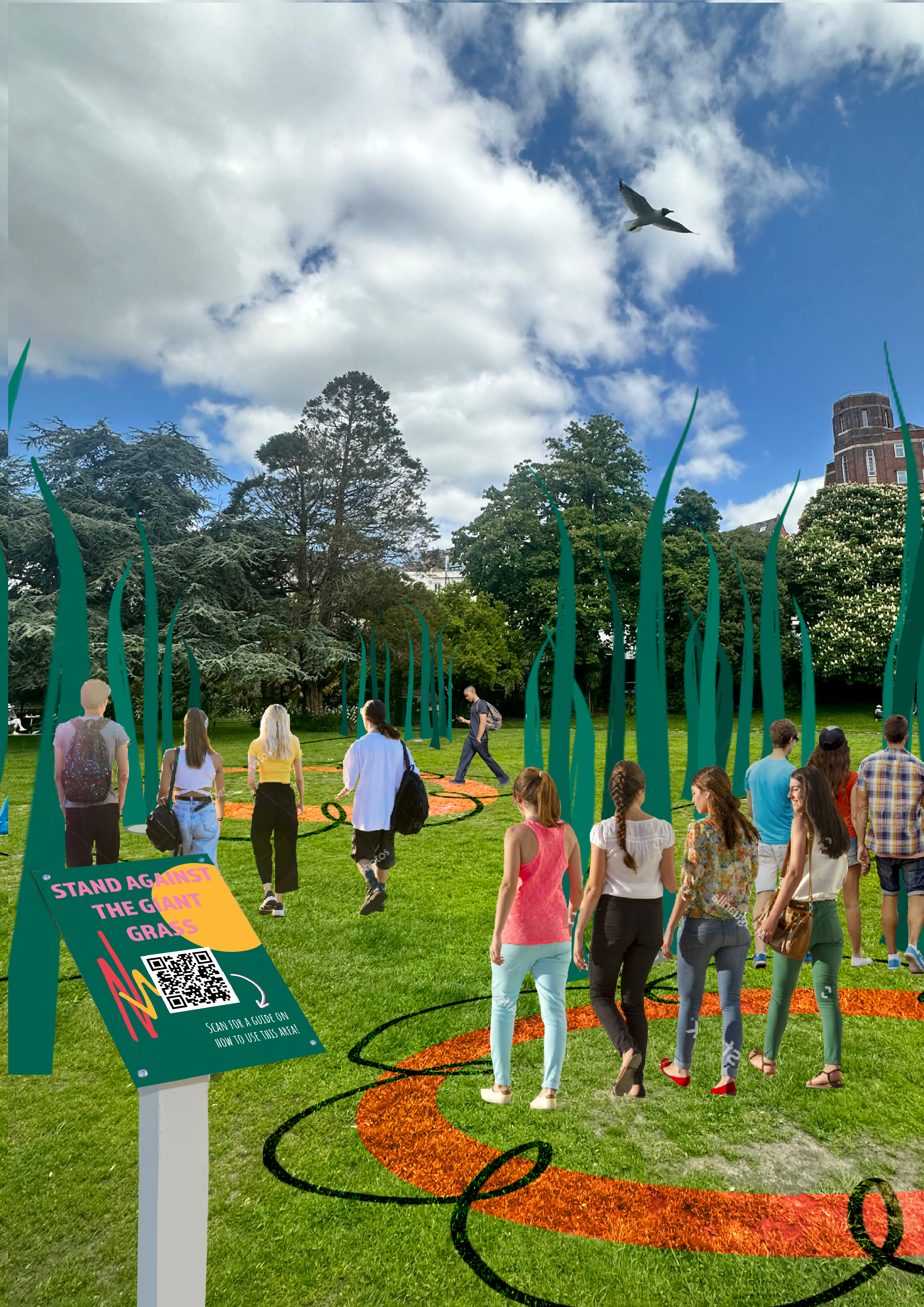

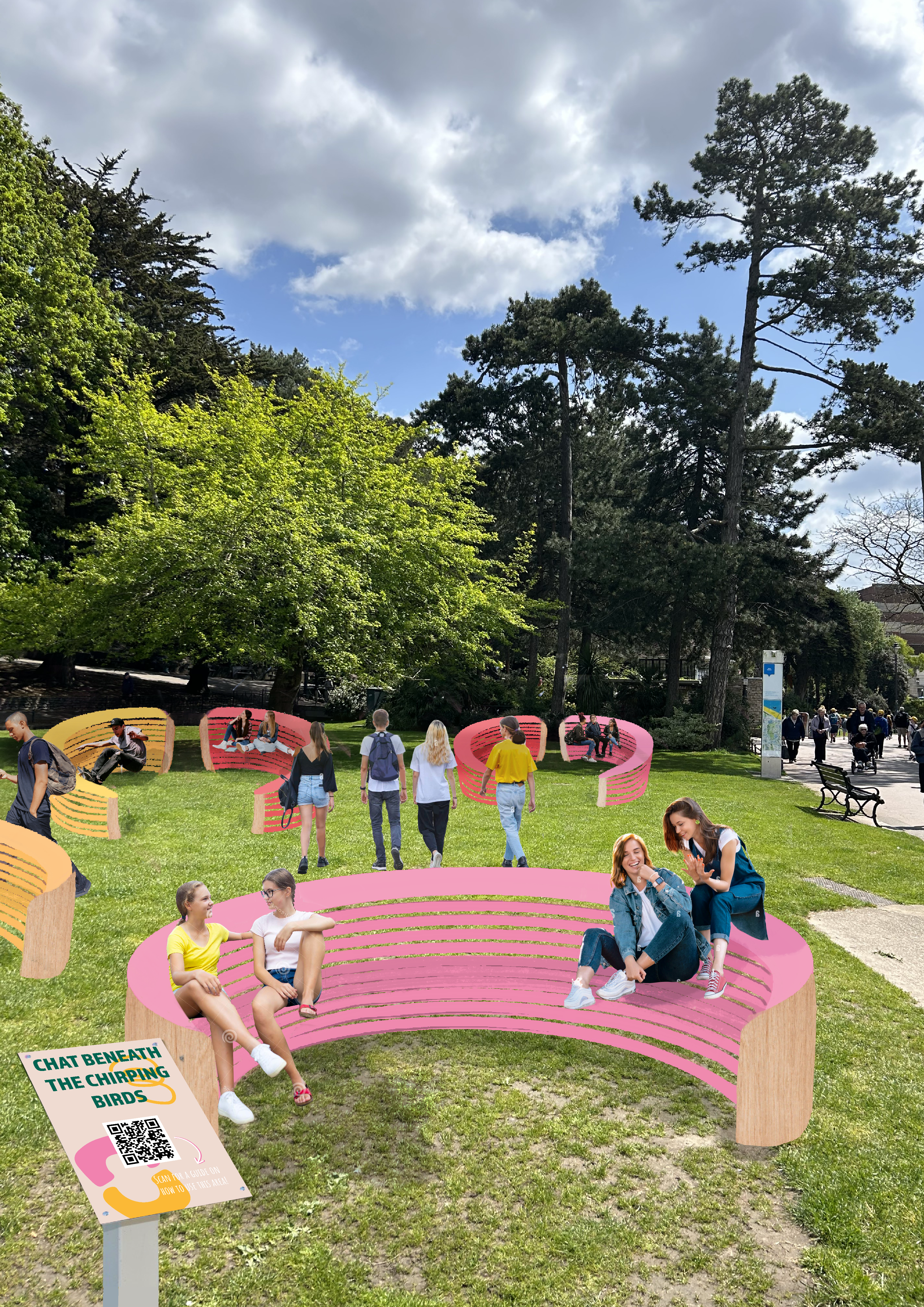



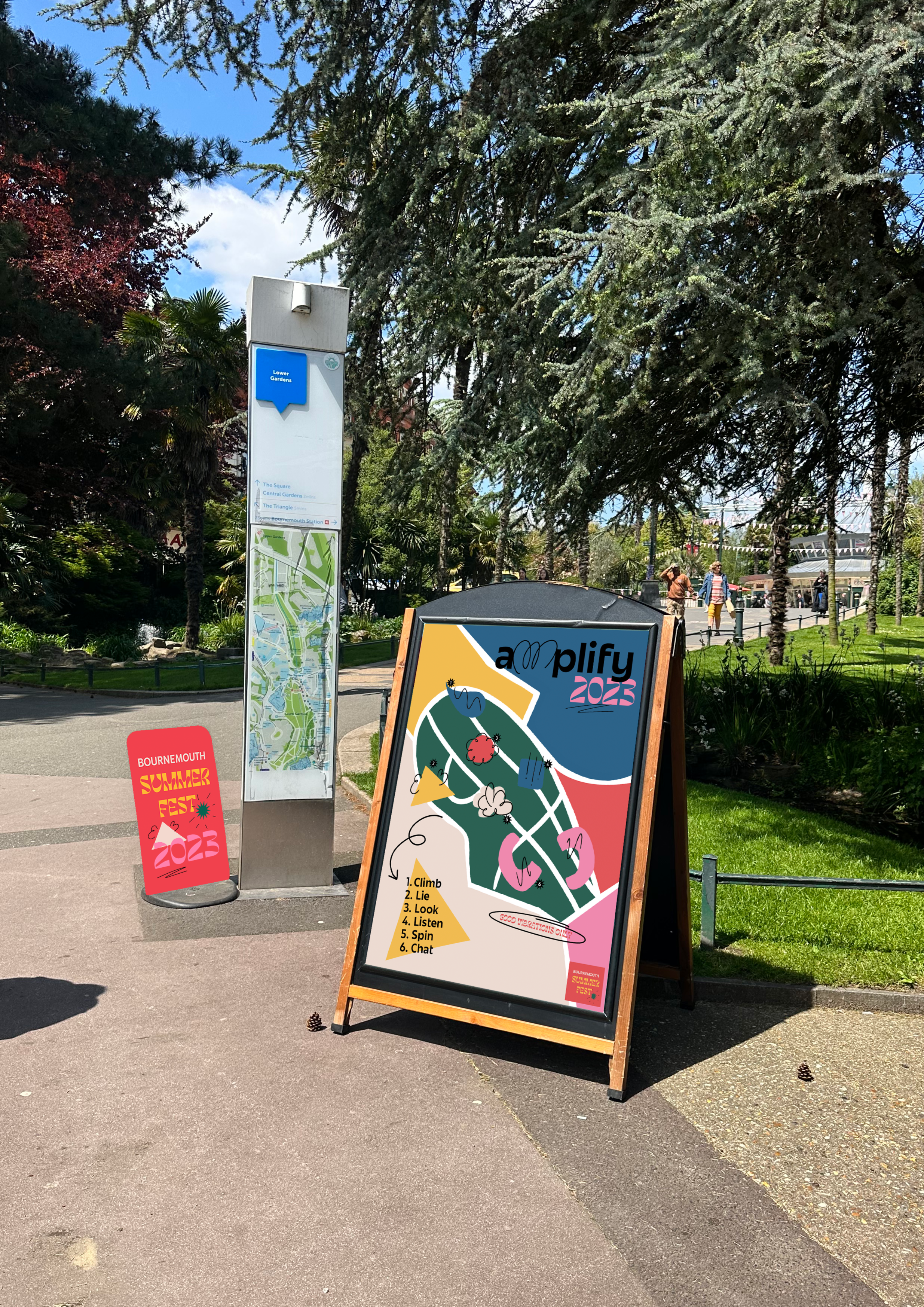
We sent a final questionnaire to the teenagers to gauge their opinion of our concept. The majority of teenagers replied that it would appeal to them because it's a new concept. Although user-centered research is an effective method it doesn't provide an all-around representation of the demographic. A possible change we could make to the design would be to implement more privacy.
I created this scale model in 3 days to visualise how Amplify works across the different areas of our site. The model is a useful medium and tool to show the scale and overall coverage of the festival across the fields.
From our user-centred research, we know that teenagers hang out in large groups, listen to music, and enjoy being outside but often find there's nothing suitable or engaging to do. We combined these key insights to create Amplify which is based on the idea of magnifying nature through visuals and audio. We created a deeper connection to nature through a series of interactive structures where teenagers can generate a nature soundscape of the fields area. The amplified sounds of nature are ones not normally heard, for example, ants burrowing or butterfly wings flapping, which generates intrigue to create a greater appreciation and connection to the non-human species around us.
Amplify Festival targets teenagers by harnessing their physical abilities, with climbable ladders and high-up interaction points on structures and seating which encourages them to be physical to generate the sound. Our intervention solves our observed seating problem and disperses teens amongst the entire area of our site, with a range of different activity areas to target every teenager. Barriers and lighting will be used as appropriate to allow 24-hour access also. We considered sustainable and ethical construction methods and by combining reclaimed scaffolding and wood our intervention is easy to install by hand with minimal destruction to the site. Our branding has been designed with modern and age-appropriate elements, which are consistent across all aspects of the site and social media which will be used to further target teenagers. Amplify has transformed the site into an interactive, immersive soundscape event designed for 13-18-year-olds.
Top